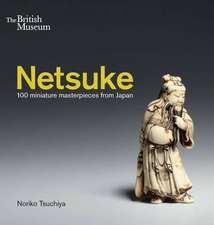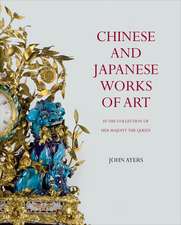Aesthetic Hybridity in Mughal Painting, 1526-1658: Transculturalisms, 1400-1700
Autor Valerie Gonzalezen Limba Engleză Hardback – 28 oct 2015
| Toate formatele și edițiile | Preț | Express |
|---|---|---|
| Paperback (1) | 390.46 lei 6-8 săpt. | |
| Taylor & Francis – 30 iun 2020 | 390.46 lei 6-8 săpt. | |
| Hardback (1) | 1014.23 lei 6-8 săpt. | |
| Taylor & Francis – 28 oct 2015 | 1014.23 lei 6-8 săpt. |
Din seria Transculturalisms, 1400-1700
-
 Preț: 436.14 lei
Preț: 436.14 lei -
 Preț: 387.20 lei
Preț: 387.20 lei -
 Preț: 390.46 lei
Preț: 390.46 lei -
 Preț: 489.26 lei
Preț: 489.26 lei -
 Preț: 385.74 lei
Preț: 385.74 lei -
 Preț: 385.62 lei
Preț: 385.62 lei -
 Preț: 381.92 lei
Preț: 381.92 lei -
 Preț: 416.22 lei
Preț: 416.22 lei - 25%
 Preț: 324.16 lei
Preț: 324.16 lei -
 Preț: 489.26 lei
Preț: 489.26 lei - 17%
 Preț: 241.15 lei
Preț: 241.15 lei - 18%
 Preț: 1111.40 lei
Preț: 1111.40 lei -
 Preț: 409.48 lei
Preț: 409.48 lei -
 Preț: 381.81 lei
Preț: 381.81 lei -
 Preț: 474.73 lei
Preț: 474.73 lei - 17%
 Preț: 258.70 lei
Preț: 258.70 lei - 26%
 Preț: 847.73 lei
Preț: 847.73 lei -
 Preț: 469.34 lei
Preț: 469.34 lei -
 Preț: 469.34 lei
Preț: 469.34 lei -
 Preț: 498.91 lei
Preț: 498.91 lei - 18%
 Preț: 1113.95 lei
Preț: 1113.95 lei -
 Preț: 449.41 lei
Preț: 449.41 lei -
 Preț: 429.05 lei
Preț: 429.05 lei -
 Preț: 388.08 lei
Preț: 388.08 lei -
 Preț: 411.42 lei
Preț: 411.42 lei - 18%
 Preț: 1054.71 lei
Preț: 1054.71 lei - 28%
 Preț: 821.13 lei
Preț: 821.13 lei -
 Preț: 469.34 lei
Preț: 469.34 lei
Preț: 1014.23 lei
Preț vechi: 1236.86 lei
-18% Nou
Puncte Express: 1521
Preț estimativ în valută:
194.06€ • 202.64$ • 160.26£
194.06€ • 202.64$ • 160.26£
Carte tipărită la comandă
Livrare economică 15-29 aprilie
Preluare comenzi: 021 569.72.76
Specificații
ISBN-13: 9781409412564
ISBN-10: 1409412563
Pagini: 336
Dimensiuni: 156 x 234 x 21 mm
Greutate: 0.85 kg
Ediția:Revised
Editura: Taylor & Francis
Colecția Routledge
Seria Transculturalisms, 1400-1700
Locul publicării:Oxford, United Kingdom
ISBN-10: 1409412563
Pagini: 336
Dimensiuni: 156 x 234 x 21 mm
Greutate: 0.85 kg
Ediția:Revised
Editura: Taylor & Francis
Colecția Routledge
Seria Transculturalisms, 1400-1700
Locul publicării:Oxford, United Kingdom
Cuprins
Contents:
Preface
Introduction
Part I Studying Mughal Painting: Critical Issues and State of Affairs: Epistemological preliminaries; Historiographical and conceptual framework of Mughal pictorial hybridity.
Part II The Mughal Pictorial Becoming: From the Beginning of the Empire (1526) to the End of Shah Jahan’s Reign (1658): Genesis of aesthetic hybridity in Mughal painting; Hyperdialectics in the Akbari pictorial synthesis; Suite et Fin: from unbridled hybridization to non-hybridness.
Conclusion; References; Index.
Preface
Introduction
Part I Studying Mughal Painting: Critical Issues and State of Affairs: Epistemological preliminaries; Historiographical and conceptual framework of Mughal pictorial hybridity.
Part II The Mughal Pictorial Becoming: From the Beginning of the Empire (1526) to the End of Shah Jahan’s Reign (1658): Genesis of aesthetic hybridity in Mughal painting; Hyperdialectics in the Akbari pictorial synthesis; Suite et Fin: from unbridled hybridization to non-hybridness.
Conclusion; References; Index.
Notă biografică
Valerie Gonzalez is an expert on Islamic art history and aesthetics. She teaches Islamic studies at the Leighton House Museum, London. She was previously a member of the Institute for Advanced Study, Princeton University, USA.
Recenzii
'Equipped with an understanding of aesthetics as the analysis of the sensory and affective encounter and a deep respect for artistic creativity, Gonzalez is able to argue for a new understanding of Mughal painting’s aesthetic syntheses of Indic, Persian, Islamic, and European pictorial traditions. Her phenomenological method permits an acute account of how a work of art makes a world through practices of spatiality, textuality, and figurality. Her historical analysis compellingly explains the transformations of these practices during the Mughal empire.' Laura U. Marks, Simon Fraser University, Canada
Descriere
The first critical study to be published on Mughal pictorial hybridity, this book investigates the workings of the diverse creative forces that underpinned the formation of the Mughal painting. Valerie Gonzalez here explores - with the updated methodology of art criticism - the processes of cross-fertilization between the Indo-Persianate legacy, the Persian models imported after 1555 and the influx of European art that have brought about a unique Indo-Islamic pictorial metaphysics characterized by a positivist mimetic order distinct from the idealistic Persian pictoriality.






